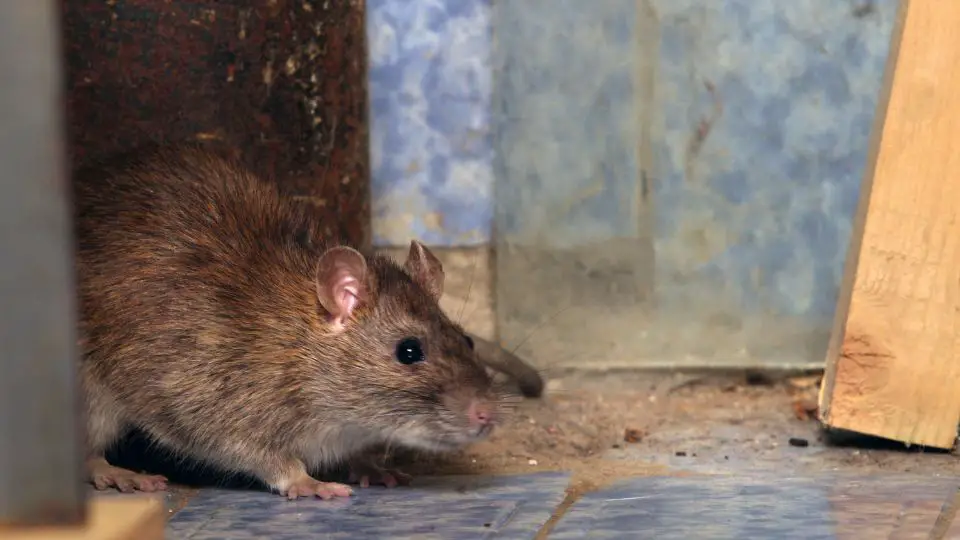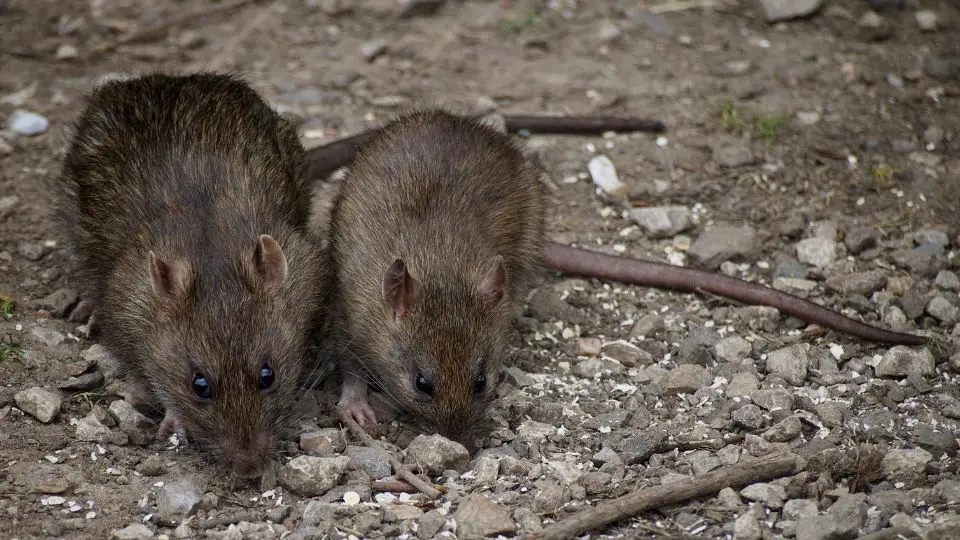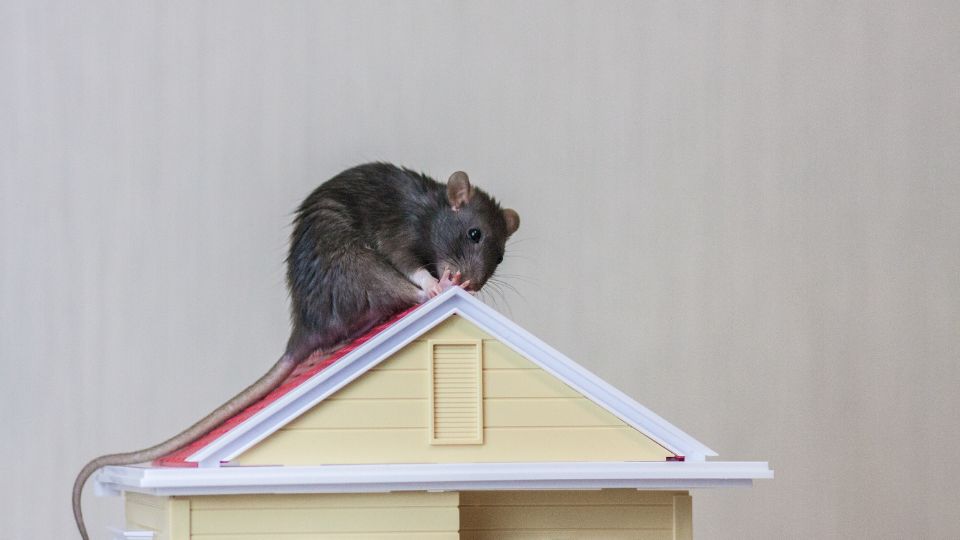Roof rats are rodents commonly found in the coastal US and tropical regions around the globe. They're notorious for invading homes, particularly the upper stories and attics, in search of food and shelter.
A roof rat infestation isn’t too difficult to spot. Typically, if you hear strange, scratchy noises from your attic or upper floors, it’s a good indicator that you have roof rats in your home.
These rodents also excrete soft, pointy-ended rat droppings, typically 12 to 13 mm long.
While those are some common signs of a roof rat infestation, there are also other things to look out for. If you want to learn how to identify and get rid of roof rats or want to know how to keep them far away, read on for some tips.
Table of Contents
How do I know if I have a roof rat?
If you think you might have roof rats, look for the following signs:
1. You hear noises in the attic or ceiling at night
One of the first signs you may have roof rats is if you hear noises from your attic or ceiling at night. Roof rats are nocturnal creatures and are most active during the evening and nighttime.
If you hear scratching, scurrying, or other strange noises from above, it’s a good idea to investigate to see if you have roof rats.
2. Rat droppings around your home
Another sign that you may have roof rats is if you start seeing rat droppings around your home. Roof rat droppings are typically 12 to 13 millimeters and black, and you may find them in areas where the rats are active, such as in your attic, garage, or storage shed.
These droppings may be soft when newly deposited, but they will harden and become pointy-ended over time.
3. You see marks of rat nests
A major sign of a roof rat infestation is if you notice a roof rat nest spring up on your property. Indoors, rat nests are often accompanied by gnaw marks, cracks in the wall, paw prints, and surrounding material damage.
Roof rats like to keep warm, and the upper stories of homes are typically more temperature-stable than lower floors. As such, roof rats will often find refuge in isolated regions of the upper floors.
That said, roof rats aren’t exclusively upper-floor dwellers. As long as there’s easy access to shelter, food, and protection, rats can adapt and find a home in any area.
Rats like to reside in these areas of the house as well:
- Garages
- Crawlspaces
- Storage sheds
- Laundry areas

4. Your furniture or walls are getting damaged
Are there signs of gnawing on your electrical wire insulation? Are your pipes or ductwork getting chewed up? Are there claw marks or other damage present on your walls or furniture? Roof rats may be to blame.
These rodents are avid chewers. Rats often chew through things to create a new opening or path. This is often how they can gain access to attics, crawlspaces, and other areas of the home.
If the gnaw marks are significant, you’re likely dealing with rats. If the damage is smaller in scale, it’s more likely to be mice. Either way, a pest control professional can help you identify and eliminate the problem.
5. Your pets exhibit strange behavior
If your dog is barking toward the attic, or you notice your cat hissing at the wall, it may indicate that roof rats are present. These rodents produce a strong odor that can make pets act out of the ordinary.
If they frequently go to a particular area and start barking or acting strange, it’s worth investigating to see if there are roof rats in the vicinity.
What is the difference between a roof rat and a rat?
Roof rats are small, black rats often found in the upper stories of homes. They get their very name from their tendency to live in elevated areas such as attics, roofs, and trees.
These rats are sometimes called black, ship, or house rats.
Roof rats are different from other rats like Norway rats in several ways.
Their key differences include:
- Ears: Roof rats have large ears, whereas Norway rats have blunter ears.
- Size: Roof rats are medium-built, with adults weighing in at about ~7 ounces.
- Color: These rats’ fur coats are often a mix of black and brown; their underside belly may be gray, white, or black.
- Face: A pointy face and pointed nose.
- Fur: Smooth and sleek body shape.
- Tail: Scaly tail that’s as long as their body.

Where do roof rats live during the day?
During the day, roof rats sleep in their nests, often located in elevated areas like attics or trees.
Are roof rats nocturnal?
Roof rats are mainly nocturnal creatures, eating 94% and drinking 95% of their daily intake at night. If you see a lone roof rat scavenging for food during the day near your house, there’s a high chance of a more extensive colony not too far from your home.
Can rats see in the dark?
Surprisingly, rats don’t have excellent night vision. Instead, they rely on their hearing, whiskers, and smell to get around in the dark.
Do Rats Hibernate?
No, roof rats do not hibernate. They are active all year-round and don’t enter a state of dormancy. In the winter, they find warm areas to stay in and continue scavenging.
What attracts rats to your roof?
Roof rats don’t just go to any roof they come across. If a place isn’t close to any food sources or water, there’s a low chance that roof rats will establish their nest there.
Three main things attract roof rats to an area: food, water, and safety.
If your attic holds storage boxes of food like fruits, there’s a chance that rats may sniff it out and enter your home.
Water is another critical element that rats need to survive. If there’s a water source like a pond or birdbath near your home, rats may be drawn to it and enter your property in search of it.
Lastly, roof rats must also keep themselves safe from predators and the elements. If the conditions of your attic or roof appear ideal for nesting, there’s a high chance that rats will take up residence there.
It can be a pain dealing with these pesky rodents, as these small creatures are excellent climbers and can damage your home. These omnivores may also harbor fleas and diseases that can ravage your family’s health.

To control the rat population, make sure you go over the following rat control procedures:
- Keep human and pet food stored in airtight containers
- Secure entry points to prevent rats from entering homes
- Fix any leaks around the house
- Throw pet feces properly.
- Trim back any dense vegetation that touches your home
- Seal up any cracks or holes you locate on the exterior of your home
- Set up a rat trap as a form of rodent control
For homeowners dealing with a rat infestation, it’s best to contact a pest control professional. These experts can identify whether you have rats and professionally dispose of them.

